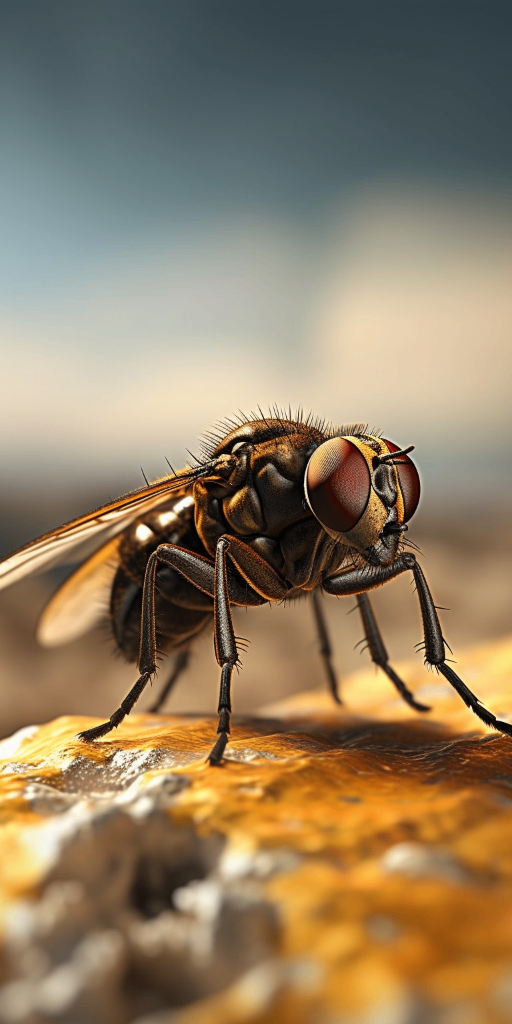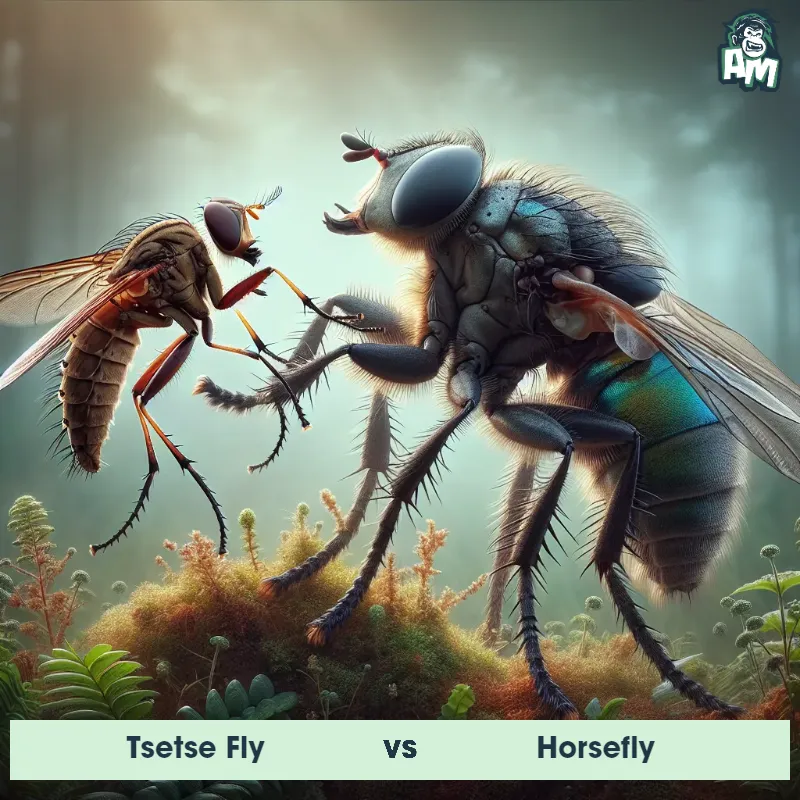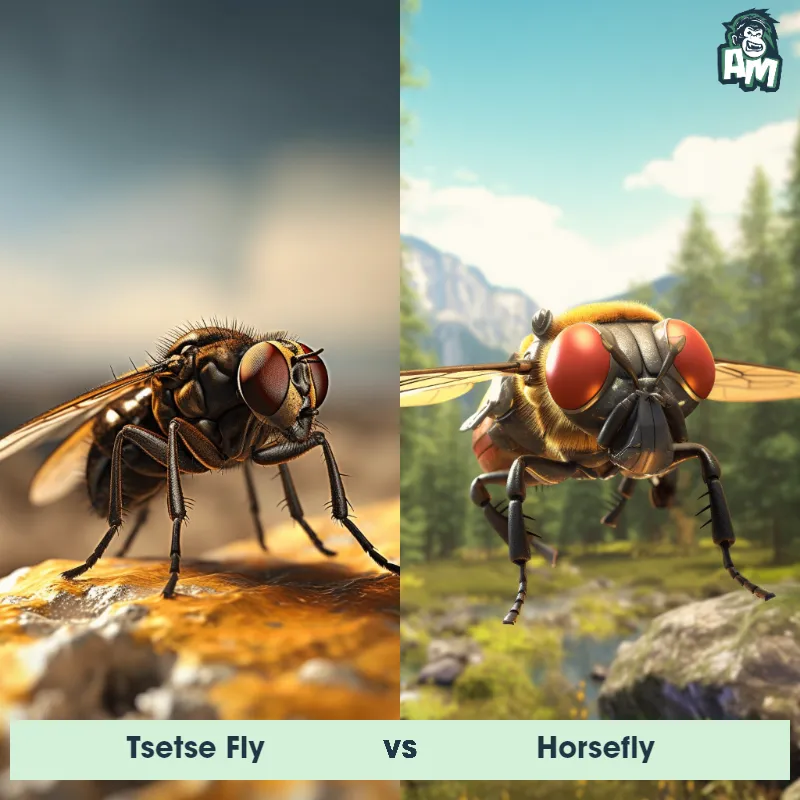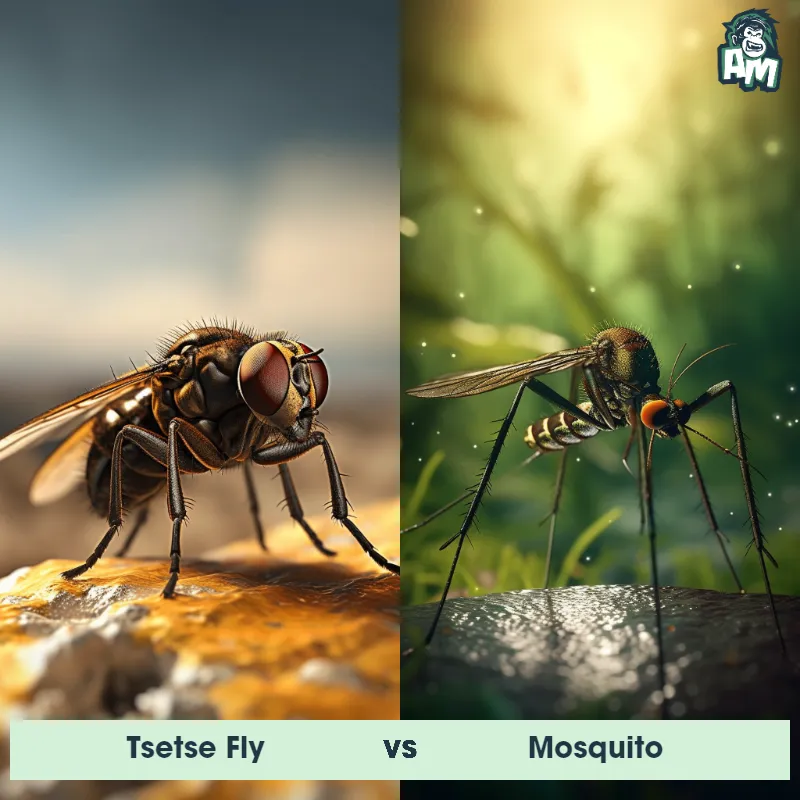The Tsetse Fly
The Tsetse Fly, also known as Glossina, is a small to medium-sized insect that belongs to the family Glossinidae. These flies are found in certain regions of Africa and are known for their blood-feeding habits. Tsetse flies have a unique appearance with elongated bodies, large compound eyes, and large, distinctive wings. They have a dark brown or black coloration and are slightly larger than common houseflies. Tsetse flies are known to transmit a parasitic disease called trypanosomiasis, more commonly known as sleeping sickness, to both humans and animals.

| Tsetse Fly | |
|---|---|
| Size | About the size of a housefly (6-14 mm), (0.24-0.55 in) |
| Weight | 0.1-0.2 g (0.0035-0.007 oz) |
| Speed | Speed: 5 mph (8 km/hr) |
| Key Strength | None |
| Biggest Weakness | Fragile wings |
| Scientific Name | Glossina |
| Family | Glossinidae |
| Habitat | Woodlands, savannas, and riverine areas |
| Geography | Sub-Saharan Africa |
| Diet | Blood of vertebrate animals |
| Lifespan | 3 weeks - 4 months |

The Tsetse Fly
The Tsetse Fly, also known as Glossina, is a small to medium-sized insect that belongs to the family Glossinidae. These flies are found in certain regions of Africa and are known for their blood-feeding habits. Tsetse flies have a unique appearance with elongated bodies, large compound eyes, and large, distinctive wings. They have a dark brown or black coloration and are slightly larger than common houseflies. Tsetse flies are known to transmit a parasitic disease called trypanosomiasis, more commonly known as sleeping sickness, to both humans and animals.
Fun Fact: A fun fact about Tsetse Flies is that they are attracted to the color blue and are known to land more frequently on blue objects or clothing as compared to other colors.
| Tsetse Fly | |
|---|---|
| Size | About the size of a housefly (6-14 mm), (0.24-0.55 in) |
| Weight | 0.1-0.2 g (0.0035-0.007 oz) |
| Speed | Speed: 5 mph (8 km/hr) |
| Key Strength | None |
| Biggest Weakness | Fragile wings |
| Scientific Name | Glossina |
| Family | Glossinidae |
| Habitat | Woodlands, savannas, and riverine areas |
| Geography | Sub-Saharan Africa |
| Diet | Blood of vertebrate animals |
| Lifespan | 3 weeks - 4 months |
Match Highlights
Tsetse Fly Matchups
We use AI to simulate matchups between the Tsetse Fly and other animals. Our simulation considers size, strength, and natural predatory behaviors to determine the most likely outcome.
Tsetse Fly: Diet, Predators, Aggression, and Defensive Behaviors
What do Tsetse Flies eat?
Tsetse flies are hematophagous insects, meaning they feed exclusively on blood. Specifically, they feed on the blood of vertebrate animals, including humans, livestock, and wild animals. They use their sharp mouthparts to pierce the skin of their host and feed on their blood for nourishment.
Do Tsetse Flies have any predators?
Tsetse flies do have natural predators that help control their population in the wild. Some of their predators include birds, spiders, wasps, and various insect-eating animals such as lizards and amphibians. These predators help keep the tsetse fly population in check by preying on both the adults and larvae of the flies.
Are Tsetse Flies aggressive?
Tsetse flies are not inherently aggressive towards humans or other animals. However, they can be persistent in seeking out a blood meal, as they rely on blood for sustenance. Their bites can be painful and irritating, but they are typically not aggressive in the sense of actively seeking out and attacking their hosts.
Do Tsetse Flies fight?
Tsetse flies do not engage in physical fights with each other or with other animals. They are solitary insects that primarily focus on finding a host to feed on. However, competition for food sources can occur among tsetse flies, particularly in areas where hosts are limited, leading to a competitive "fight" for access to blood meals.
How do Tsetse Flies defend themselves?
Tsetse flies have a few defense mechanisms to protect themselves from predators and other threats. One of their primary defenses is their ability to fly quickly and evade capture by predators. Additionally, tsetse flies have evolved to have a tough exoskeleton that provides some protection from physical harm. They also have a natural aversion to certain smells and sounds that may signal danger, helping them avoid potential threats.
What is the biggest weakness of Tsetse Flies in a fight?
One of the biggest weaknesses of tsetse flies in a fight or confrontation is their relatively fragile nature. Despite their ability to fly and evade predators, tsetse flies are small and delicate insects that can be easily injured or killed by physical trauma. Their reliance on blood meals also makes them vulnerable to starvation if they are unable to find a host to feed on.
Fun Fact: Another interesting fact about Tsetse Flies is that they are exclusively found in sub-Saharan Africa and are not present in any other region of the world.
Fun Fact: Tsetse Flies have a unique reproductive behavior, as the female fly gives birth to a single fully developed larva instead of laying eggs. This process, known as viviparity, allows the larvae to mature within the female fly's uterus before being released.














